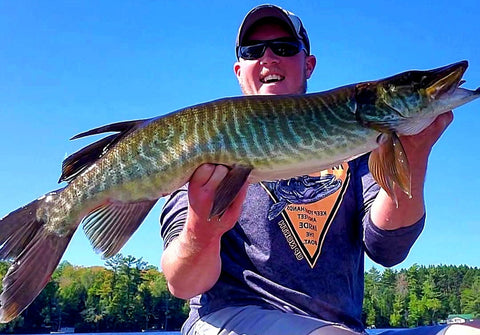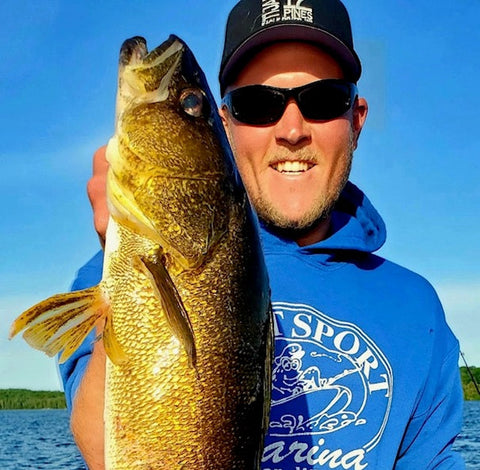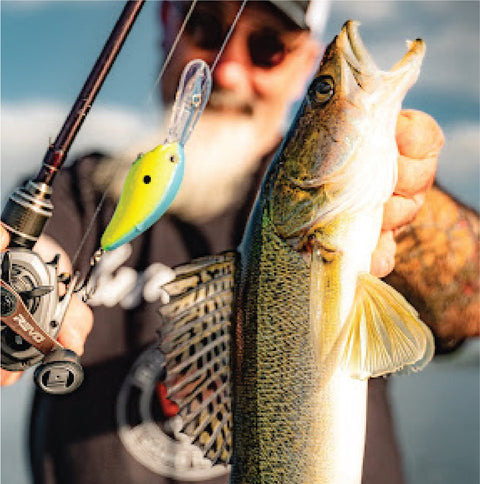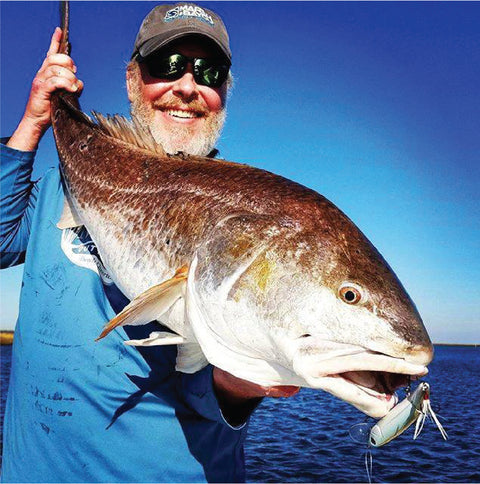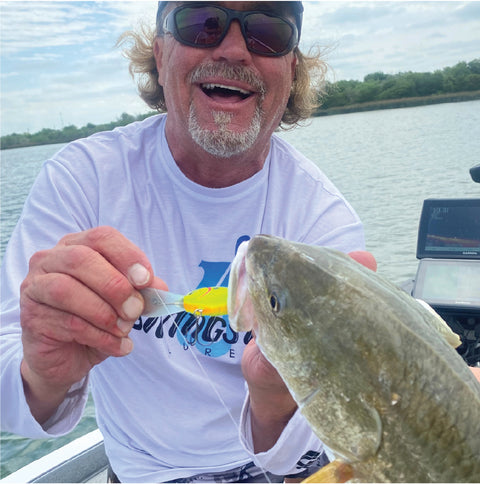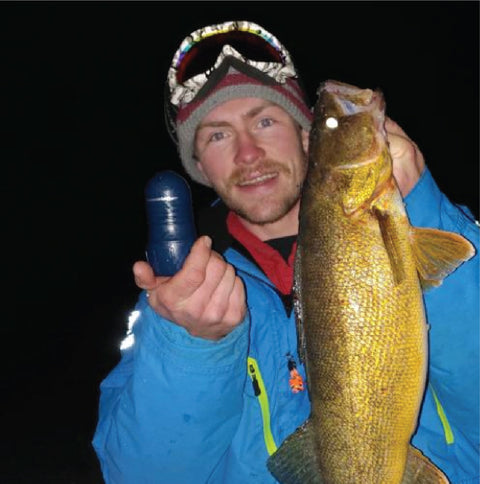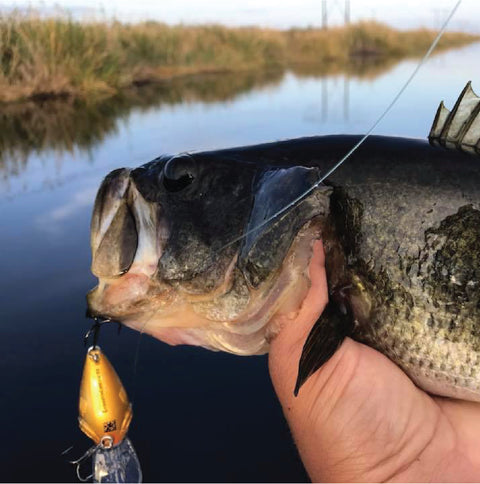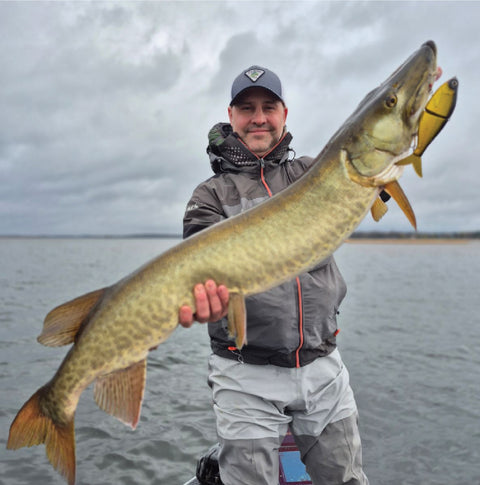LiveScope Tips and Techniques for Better Fishing: Lures for Livescope Forward Facing Sonar

One of the most common reactions anglers have after buying their first forward-facing sonar unit—like Garmin LiveScope—is surprise. Not because of what they see on the screen, but because of what they don’t see: an instant improvement in their fishing results.
With the hype flooding social media, TV, and tackle shops, it’s easy to assume that investing in forward-facing sonar will instantly elevate your game. The reality? LiveScope is a powerful tool, but like any advanced equipment, it requires time, practice, and the right lures to unlock its full potential. Whether you’re new to LiveScope or looking to refine your skills, mastering fundamentals like casting distance, lure control, and fish interpretation is essential.
Here’s the good news: Even if you don’t own sonar, these tips can still improve your accuracy, efficiency, and results on the water. Let’s dive into the key skills and strategies to elevate your fishing—on or off the screen.
Mastering Casting Distance with Forward Facing Sonar
Casting accuracy is critical when targeting fish spotted on LiveScope, traditional sonar, or even by instinct. While LiveScope can reveal structure and fish up to 100 feet away, it’s only effective if you can consistently cast to those distances with precision.
One of the best ways to hone this skill is by using a highly visible bait like the Livingston Lures Jerkmaster. All Livingston Lures are Forward-Facing Sonar Certified, meaning they’re optimized to deliver the clearest, brightest returns on your sonar screen. The Jerkmaster’s slow-sinking, suspending action allows you to pause it mid-retrieve, making it easy to track and adjust in real time.
Practicing with a bait like the Jerkmaster builds muscle memory and helps you gauge distances like 40, 60, or 80 feet. Targeting known structures—such as stumps, brush piles, or isolated rocks—also boosts confidence and reduces the need to look away from the screen during your cast. This precision is especially vital in windy conditions, where a few feet off-target can mean the difference between a follow and a strike.
Drills for Accuracy with Forward Facing Sonar
To improve casting accuracy, try this drill: Choose a set distance (e.g., 60 feet), cast repeatedly to that spot, and observe the lure’s entry point on your sonar screen. Over time, this repetition builds instinctive precision, allowing you to hit your mark without second-guessing, even while monitoring the sonar and boat position.
Multitasking is key. While casting, maintain boat position with your trolling motor and slowly pan the LiveScope transducer to keep fish in view. Coordinating these tasks—casting, scanning, and steering—takes practice, but experienced anglers use this seamless rhythm to track fish movements and react in real time.
Interpreting Fish Behavior on Forward Facing Sonar
LiveScope lets you observe fish reacting to your lure in real time. For instance, bass near a brush pile might follow your bait but hesitate to strike. Some fish may dive deeper when the boat approaches, signaling they’re spooked.
The key is adaptation. Fish may chase a fast-moving lure but lose interest if it pauses too long, especially in clear, calm water. Conversely, cold-water fish may respond better to a bait that suspends in their strike zone. By analyzing how fish react to lure speed, direction, and type, you can refine your approach for better results.
Lure Selection for Forward Facing Sonar
Choosing the right bait for sonar fishing balances visibility, realism, and action. All Livingston Lures are Forward-Facing Sonar Certified, ensuring they’re highly visible on your screen, which simplifies tracking and presentation. Their patented EBS (Electronic Baitfish Sound) technology enhances realism, making them a top choice for forward-facing sonar.
Fast-Start: Forward-Facing Sonar Lures
If you’re new to forward-facing sonar, these Livingston Lures can simplify your learning curve while maximizing your time on the water:
-
 Jerkmaster 121: Ideal for bass and walleye, this lure is durable enough for toothy species like pike. Its versatility and clear sonar returns make it a go-to for beginners and pros alike.
Jerkmaster 121: Ideal for bass and walleye, this lure is durable enough for toothy species like pike. Its versatility and clear sonar returns make it a go-to for beginners and pros alike.
-
 Vapor Deep Plus: Designed for deep water and open-water ledges, this lure excels when targeting fish near underwater cover like laydowns or cribs. Its bright sonar signature helps you dial in your presentation.
Vapor Deep Plus: Designed for deep water and open-water ledges, this lure excels when targeting fish near underwater cover like laydowns or cribs. Its bright sonar signature helps you dial in your presentation.
-
 Magnus: Perfect for musky and pike anglers, the Magnus features a versatile weighting system, allowing it to be worked at various depths. Its crisp, clear sonar returns leave little guesswork when targeting elusive predators.
Magnus: Perfect for musky and pike anglers, the Magnus features a versatile weighting system, allowing it to be worked at various depths. Its crisp, clear sonar returns leave little guesswork when targeting elusive predators.
Why LiveScope Works Better with Livingston Lures
Mastering fundamentals—casting control, lure presentation, and fish behavior analysis—is critical, but using a lure optimized for visibility and control transforms your LiveScope experience. The Livingston Lures’ advantage is evident on your screen: brighter, clearer, and more controlled sonar returns equals more fish caught. Livingston's Forward Facing Sonar Certified lures allow you to focus on the fish instead of trying to see your lure. This is especially true when targeting fish at long distances or after you’ve mastered your sonar system.
Livingston Lures and LiveScope are a perfect match—like peanut butter and jelly. With years of innovation in fishing technology, including their EBS system, Livingston has optimized their lures for forward-facing sonar, setting them apart from the competition.
In the Net
Forward-facing sonar is only as effective as the angler behind the screen and the lure on the line. By practicing casting drills, interpreting fish behavior, and selecting the right lure for the situation, you can significantly improve your fishing—with or without LiveScope.
Take these techniques to the water and put them to the test. Practice hitting specific distances, observe how fish respond, and experiment with new lures. Keep learning. That’s how sonar becomes more than just a screen—it becomes a game-changing advantage.
FAQ: Mastering LiveScope for Better Fishing
1. What is Garmin LiveScope, and why doesn’t it instantly improve my fishing?
Garmin LiveScope is a forward-facing sonar technology that provides real-time imaging of fish and structure up to 100 feet away. While it’s a powerful tool, it doesn’t automatically improve results because effective use requires practice in casting accuracy, lure control, and interpreting fish behavior.
2. Do I need LiveScope to benefit from the techniques in the article?
No. The techniques—such as improving casting accuracy, understanding fish behavior, and selecting effective lures—can enhance your fishing skills whether you’re using LiveScope, traditional sonar, or no sonar at all.
3. How can I improve my casting accuracy for LiveScope fishing?
Practice casting to specific distances (e.g., 60 feet) repeatedly while observing your lure’s entry point on the sonar screen. Using a visible bait like the Livingston Lures Jerkmaster helps build muscle memory. Target known structures like stumps or brush piles to develop precision, especially in challenging conditions like wind.
4. What is a good drill to practice casting with LiveScope?
Choose a set distance (e.g., 60 feet) and cast to it repeatedly, watching your lure on the sonar screen. This builds instinctive accuracy. Practice multitasking by maintaining boat position with your trolling motor and panning the LiveScope transducer to keep fish in view.
5. Why are Livingston Lures recommended for LiveScope?
Livingston Lures are Forward-Facing Sonar Certified, meaning they’re optimized for clear, bright sonar returns, making them easier to track on your screen. Their Electronic Baitfish Sound (EBS) technology enhances realism, increasing fish attraction and simplifying lure presentation.
6. Which Livingston Lures are best for beginners using forward-facing sonar?
-
Jerkmaster 121: Versatile for bass, walleye, and durable for pike.
-
Vapor Deep Plus: Ideal for deep water, ledges, and underwater cover like laydowns.
-
Magnus: Great for musky and pike, with a versatile weighting system for various depths.
7. How do I interpret fish behavior on LiveScope?
LiveScope shows real-time fish reactions. For example, bass may follow a lure but not strike if it pauses too long in clear water, while cold-water fish may prefer a suspending bait. Adjust lure speed, direction, and type based on how fish move to optimize your approach.
8. What should I do if fish seem spooked on LiveScope?
If fish dive deeper when your boat approaches, they may be spooked. Try reducing boat noise, slowing your approach, or adjusting lure presentation (e.g., using a slower retrieve or a suspending bait) to keep fish engaged.
9. How do I manage multitasking while using LiveScope?
Practice coordinating three tasks: casting accurately, maintaining boat position with the trolling motor, and panning the LiveScope transducer to track fish. Start with drills focusing on one task at a time, then combine them to build a seamless rhythm.
10. Can I use LiveScope effectively in windy conditions?
Yes, but it requires precise casting. Practice with highly visible lures like Livingston’s Jerkmaster to maintain accuracy. Focus on controlling boat position and panning the transducer to keep fish in view, even in challenging conditions.
11. Why are casting distance and lure visibility so important for LiveScope?
LiveScope can detect fish up to 100 feet away, but you need to cast accurately to that distance and track your lure on the screen. Lures optimized for sonar visibility, like Livingston Lures, make it easier to monitor and adjust your presentation in real time.
12. How long does it take to master LiveScope?
Mastery depends on practice. Regularly performing casting drills, experimenting with lures, and observing fish behavior can lead to noticeable improvements within a few fishing trips. Consistent practice over weeks or months will build advanced skills.
13. Where can I learn more about using LiveScope and Livingston Lures?
Visit the Livingston Lures website for more on their Forward-Facing Sonar Certified lures. For LiveScope tips, check Garmin’s official resources or connect with fishing communities on platforms like X for real-time advice from experienced anglers.


